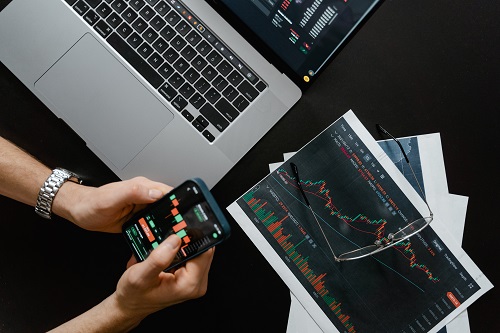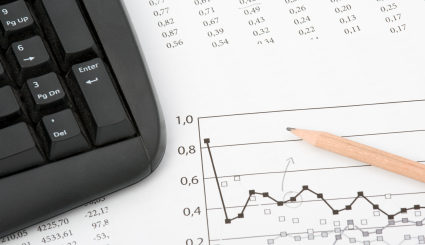Why Do You Need Business Intelligence for Your Retail Business?

The power and influence of retail analytics with BI is undeniable. It is being infused into every core retail system. Data-driven decision making is no longer optional; it is a necessity for retail. Leading retailers have embraced digital transformation and leveraged the latest business intelligence (BI) capabilities to identify market trends, spot shopping patterns and changes in consumer behavior, and make informed decisions based on valuable insights.
BI is becoming more readily available to all sizes of retail stores. It helps retail businesses extend their reach, expand their capabilities, and refine what their customers really want. Brands and retailers are connecting with consumers in-store through e-commerce, social media, mobile apps, seasonal kiosks, third-party marketplaces, and more. Consumers are looking for faster and more convenient fulfillment options, as well as personalized assortment and promotions, which is now the norm.
Retail analytics with BI capabilities allows retailers to gather and mine large amounts of data for insights, which they can use to forecast trends, predict demand, and make data-driven decisions. It offers limitless possibilities to help shape the future of online and in-store shopping, highlighting real-time personalization, data democratization, and the use of information to improve the customer experience as potential applications.
Here are 10 ways that retail analytics with business intelligence can have a real impact across your retail organization:
1. Access Real-time Data
Today, retailers must handle and sort through vast amounts of data, whether it’s customer details, supplier information, or inventory levels. Not only do they need to ensure that this data is accurate, but they also need to be able to pull it together to gain full transparency across the entire supply chain and really understand what’s going on in their business.
BI tools remove the burden of sorting through data and present accurate insights in user-friendly dashboards. It is vital that this information can be viewed in real-time, allowing retailers to react quickly to new information, such as modifying prices, reallocating inventory, or changing deals and offers. As the flow of information increases, staff will always be able to easily see the information they need and create their insights from the stored data.
2. Predicts Market Trends
A robust retail analytics tool predicts customer trends, which helps brands create a commercially viable product catalog and maintain inventory and sizing. Reports can tell you which products in the catalog are trending and which merchandisers and channel operators can select and optimize. Data and information can also be used to forecast potential demand in the coming months or during the holiday season.
Predictive and forecasting retail analytics can sift through reams of unstructured data, including social media, to identify trends, whether they are upcoming fashion styles, major events, or innovations coming to market. Retailers can use this information to predict demand for un-launched products, create new shopping experiences and refine their customer interactions.
3. Simplify and Automate Tasks
When working with a retail analytics tool, you want a simple and customizable user interface. You need to leverage real-time data and insights to promote intelligent marketing, sales, merchandising, supply chain optimization, and retail strategies.
Automation, interpretations, and recommendations from analytics have a tremendous impact on brands. Automation saves time and reduces the risk of human error. Real-time product assortments and pricing are more likely to be automated, optimizing effort, time, and management of price updates.
4. Optimize Inventory Management
Leveraging the analytics built into your software application allows you to actively monitor inventory management metrics such as inventory turns, inventory availability, average inventory value by product category, top-selling items, etc. Tracking these metrics gives you insight into market fluctuations, top-selling items, etc., which gives you insight into product demand and allows you to stock the products that are most in demand. In addition, managing inventory based on market demands gives you an advantage over your competitors.
5. Improve Customer Experience
Data analytics helps retailers analyze how customers shop and use that data to deliver a seamless customer experience. From product selection to purchase, data analytics focuses on providing personalized attention to each customer. This experience goes a long way in building customer loyalty.
Retailers are using BI to refine and personalize product-search based on each customer’s preferences. Online fashion and cosmetics retailers can use business intelligence to provide unique recommendations and suggestions for buying a set of products at a discounted price. This allows retailers to increase sales through cross-selling and improve customer satisfaction.
With customer-centric retail data, in-store and online data can be combined to define customer segments, optimize omnichannel retail marketing efforts, and help create hyper-personalized customer experiences.
6. Drive Revenue Growth
Retail analytics can give retailers easy access to the data they need to better understand revenue, margins, and sales to uncover high-potential growth areas and better understand customer behavior. Analytics tools assimilate masses of information, including individual purchase history, browsing habits, and search queries, to help retailers understand the factors that may encourage customers to engage in a purchase. Perhaps your customers will be swayed by a 10% off or free shipping code that appears in real-time when the customer hovers over the checkout button. Or maybe they need a follow-up email offering a discount or personalized product recommendation. These timely interventions with customers can make the difference between winning or losing a sale.
Data analytics helps the retail industry find opportunities that have a high return on investment. As the amount of data collected by retailers increases every day, intelligent tools are increasingly necessary to make successful business decisions.
7. Real-time Competitive Analysis
With inflation and a price-sensitive customer base, price agility is a major challenge. Customers are comparing your competitors’ prices to find the most profitable offer. This is true for both online and offline retail; therefore, real-time price benchmarking against the competition allows you to quickly and effectively change pricing strategies. This saves your team the time and effort of manually researching competitor prices, at the end of which marketing and repricing strategies are no longer necessary.
8. Increase Customer Retention Rate
A customer’s needs change every day. Predicting and responding to customer needs helps you win more customers and keep them longer. Integrated analytics allows you to predict customer needs by analyzing buying patterns, determining the value of the average basket, and recommending specific products. In addition, launching a customer loyalty program and offering unique rewards will attract more customers and help you increase customer retention rates.
9. Expand Retail Chain Stores
This is especially beneficial for retailers who want to open a new outlet in a particular location. Data analysis helps the retailer find the locations where the most people spend the most of their time. The analysis also provides information on demographics, spending power, and market conditions. This helps retailers select the areas they think are appropriate to operate their outlet and attract maximum customers.
10. Strategic Decision Support
The retail industry depends on data to make strategic decisions. Predictive retail analytics allows the retailer to take quick action to decide on stocking, tracking, and regular replenishment of SKUs. Retailers rely on data to make informed business decisions using a single, reliable source of product and customer information can get a highly accurate picture of what is working and what is not.
Optimize Store Operations with ChainDrive Retail Analytics
Retailers rely heavily on data to optimize decision-making across the organization. Data can impact trend forecasting, inventory control, marketing strategy, and even influence customer behavior, especially in the increasingly digital e-commerce space.
ChainDrive retail analytics software unifies data from online and physical stores to a central reporting dashboard. Retailers can view and analyze sales, customers, products, staff, marketing, inventory, and financial data and make more informed decisions. ChainDrive retail analytics can help retailers build customer loyalty and improve their brand image by ensuring customer satisfaction. With technology taking center stage in the retail industry, choosing the right retail analytics tool is critical to your business’s impact and performance.
If you are looking for reliable, high-quality retail analytics software with business intelligence to get a 360-degree view of your customers. Please request a free live demo with one of our software experts.





